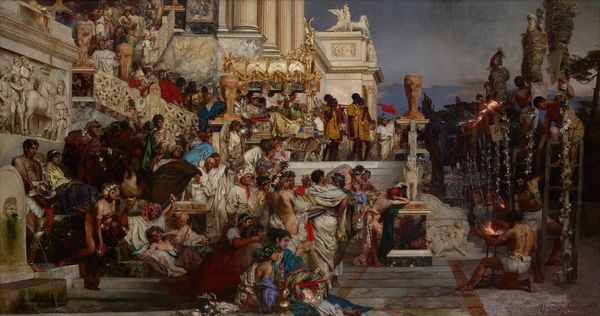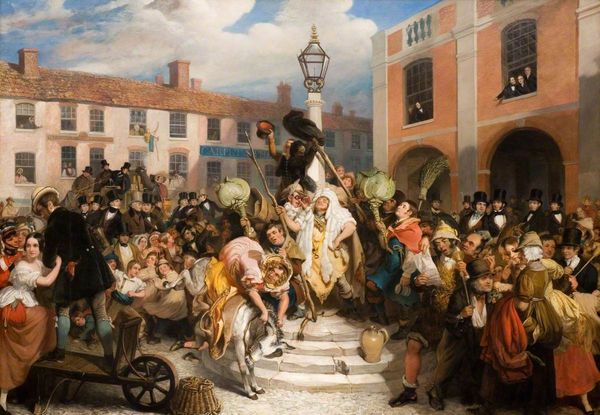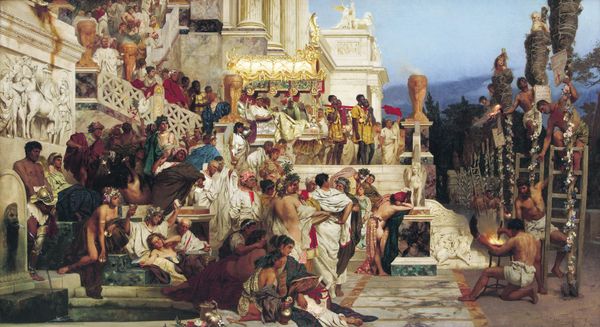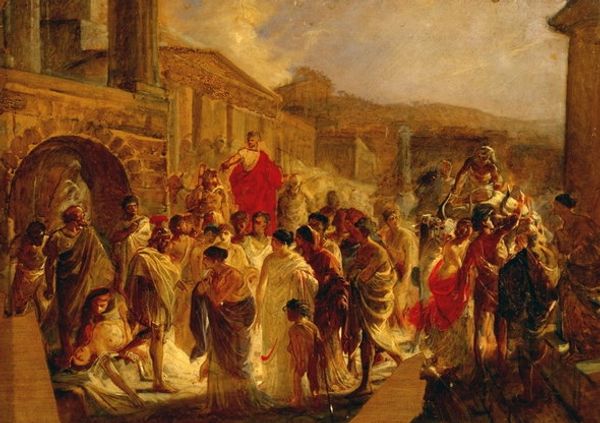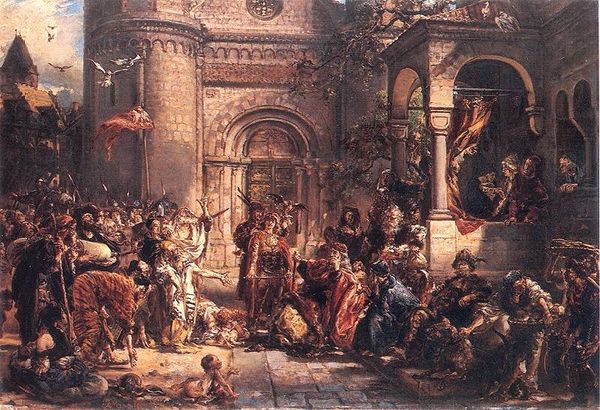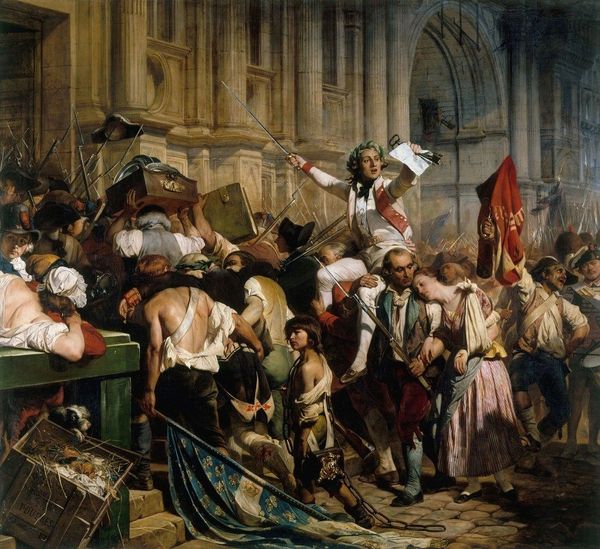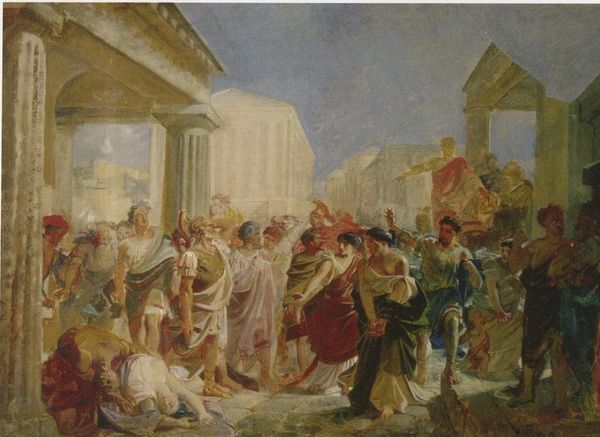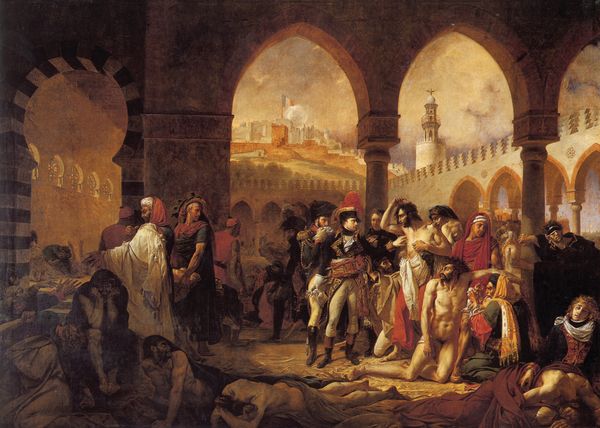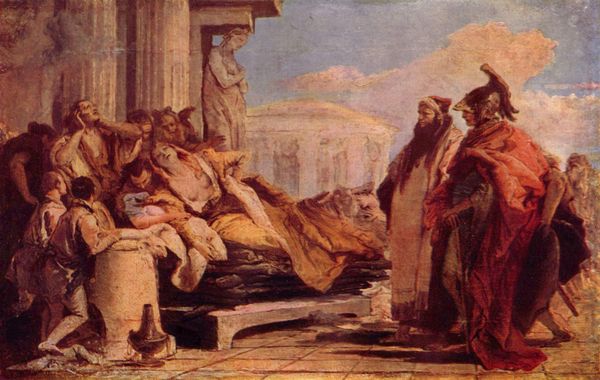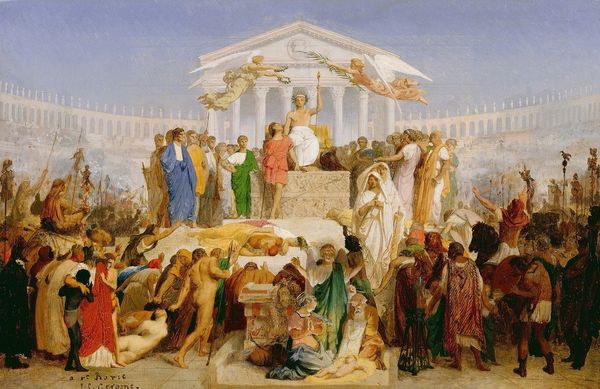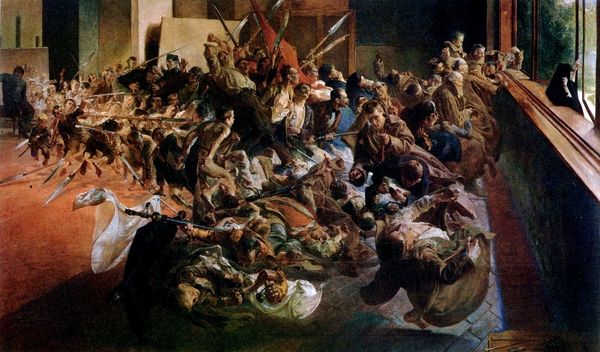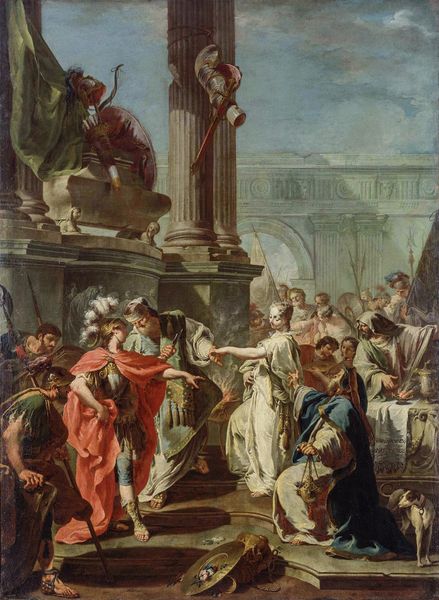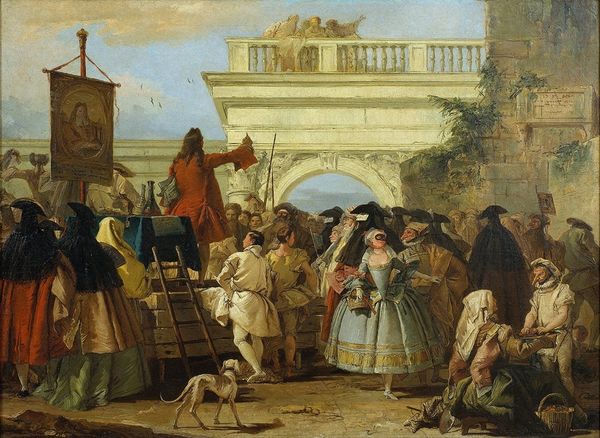
oil-paint
#
oil-paint
#
figuration
#
oil painting
#
romanticism
#
cityscape
#
genre-painting
#
history-painting
#
realism
Copyright: Public domain
Curator: This oil painting is "Easter Day at Rome" by John Frederick Lewis, completed in 1840. What are your initial thoughts? Editor: I am struck by the contrast! The architecture is monumental, solid, and almost blinding in its whiteness. Then there is a sea of people, figures rendered with so much texture and individual character. It feels vibrant yet also chaotic. Curator: That’s a keen observation. The architecture represents institutional power, religious and societal. Note how Lewis depicts it using precise, almost clinical brushstrokes, emphasizing the cold, hard materials. This contrasts sharply with the figures, a mix of social classes and occupations. Editor: Right. Look at the central monument—its presence dominates the scene. What are some of the recurring symbols, if any? Curator: Notice the attire and tools they carry. These tell us much about the work these people would perform and how certain jobs were rewarded socially, as well as the access some people would have to raw resources or trading materials to fashion better quality fabrics and garments than other classes of people. This offers a social reading. Editor: Ah, it is not merely about a religious celebration, but a representation of social fabric! The symbolism in the clothing becomes quite complex—a visual language of status, aspiration, and perhaps even resistance? How about the open space, what significance does that location provide? Curator: Absolutely, and the placement, this public space, is telling, particularly the composition: they have positioned the laboring figures in the forefront, directly in view. Note the materials Lewis would be purchasing to render these visual narratives too, not accessible to everyone and clearly consumed by the most wealthy. What did his studio look like? What type of patronage kept Lewis in paint? Editor: Fascinating questions! These details truly amplify the image's impact. Delving into the layered meanings and Lewis' artistic approach, there is an evocative painting that invites continuous observation and questioning, which I love. Curator: Precisely! Focusing on these nuances enhances our awareness of artistry. Thanks for walking through it with me.
Comments
No comments
Be the first to comment and join the conversation on the ultimate creative platform.
